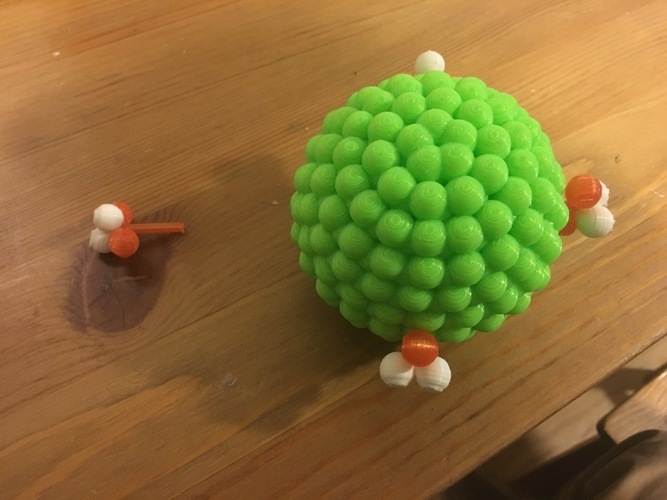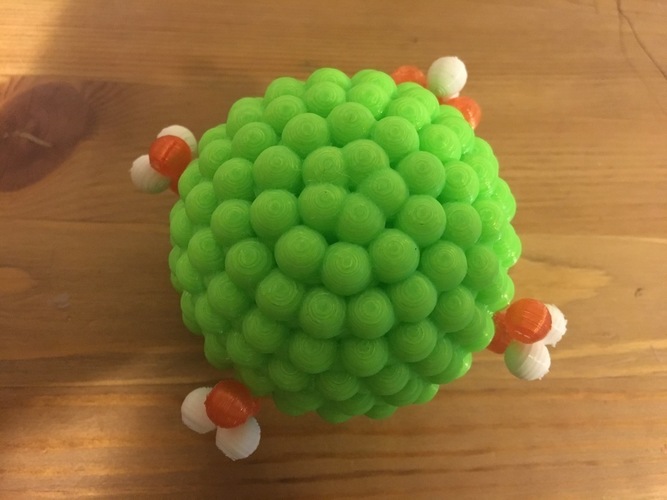


Prints (0)
-
No Prints Yet
Be the first to upload a Print for this Design!
Description
This model can be used to demonstrate the alpha decay of a uranium nucleus. Helium nuclei (alpha particles) can be removed from the nucleus. The sizes of the uranium and helium nuclei are approximately to scale. Assuming a simplified decay chain with no beta decays, the model can undergo four alpha decays to reach a stable isotope of lead. The V2 files have a cutout in the uranium atom so the alpha particles slide inside of the nucleus.
Print Settings Printer: Da Vinci Jr. Rafts: Yes Supports: Yes Infill: 5% Notes: Rafts are recommended for the uranium atom sections to prevent warping of the part if using a non-heated print bed. The uranium atom is separated into two parts to avoid the need for supports. The alpha particle parts should be printed with supports.
Post-Printing If printing the uranium atom in two halves, glue the halves together after printing. Hot glue works well. The alpha particles also need to be assembled. Place some glue onto the table on alpha 1, and insert into the cutout in alpha 2. (See picture below).
Standards
NGSS
CCSS
Overview and Background Nuclear decay is an important part of chemistry and physics curricula. There are a lot of misconceptions that students have surrounding radiation and its effects. This models helps to explain one common form of radioactive decay, alpha decay. Objectives: Students will be able to describe how nuclei decay in order to become more stable. Students will be able to use the law of conservation of mass to predict the identity of the element as alpha particles are given off. Students will be able to describe the relative sizes of atomic nuclei.
Preparation: Students should be familiar with the parts of the atom and the effect of changing the numbers of protons, neutrons, and electrons on the atom type, atomic number, mass number, and charge. Teaching nuclear decay is a good way of having students practice and expand upon these concepts. The model can be used as an introduction to a unit on nuclear decay.
Lesson Plan and Activity Introduce students to the idea that the nucleus of an atom is only stable with certain ratios of protons and neutrons. Atoms larger than lead undergo alpha decay in order to become more stable. Show the model and remove an alpha particle. Have students determine what element the alpha particle is the same as. (the red spheres are protons while the white spheres are neutrons). Give students the original mass number and atomic numbers for the uranium atom (238 and 92) and have them figure out what the element remains once the alpha particle has left. Repeat until all alpha particles have been ejected and stable lead is formed. The alpha particles can also be used to model particle radiation. The model can be used to show they are fast moving particles which carry energy. As an additional exercise, students can use CAD software to design a model that can represent electron capture or beta decay. Materials Needed A periodic table will be helpful in determining the new atom's identity in the activity along with the model.
Comments